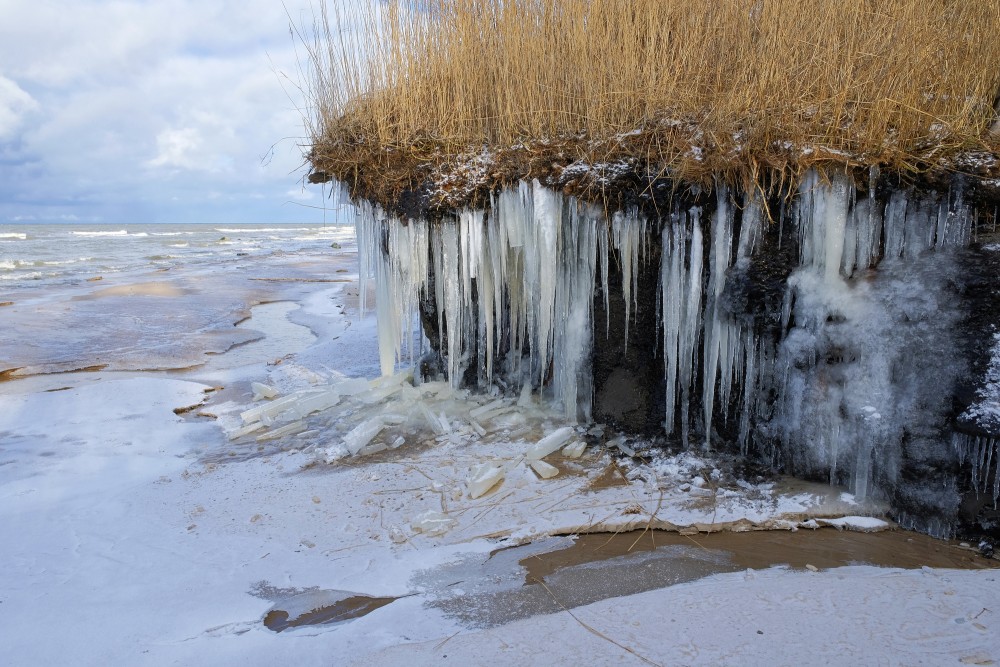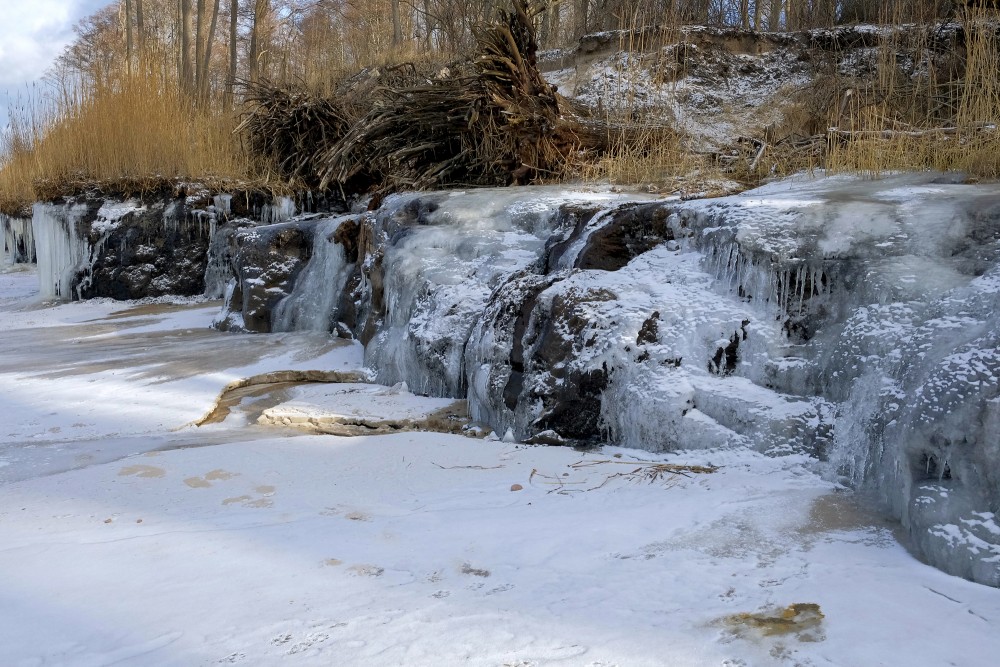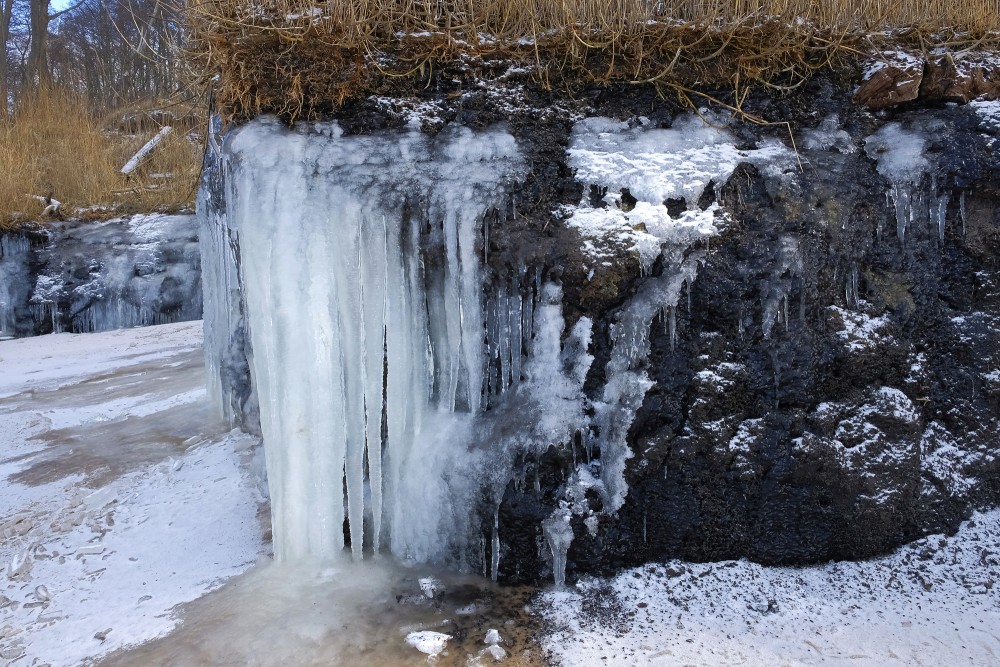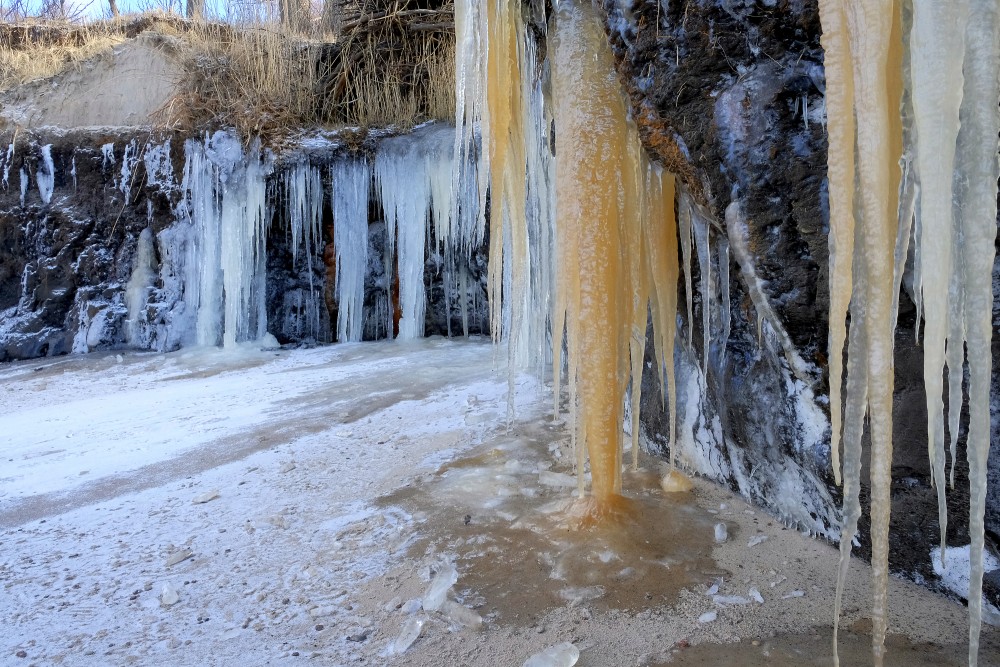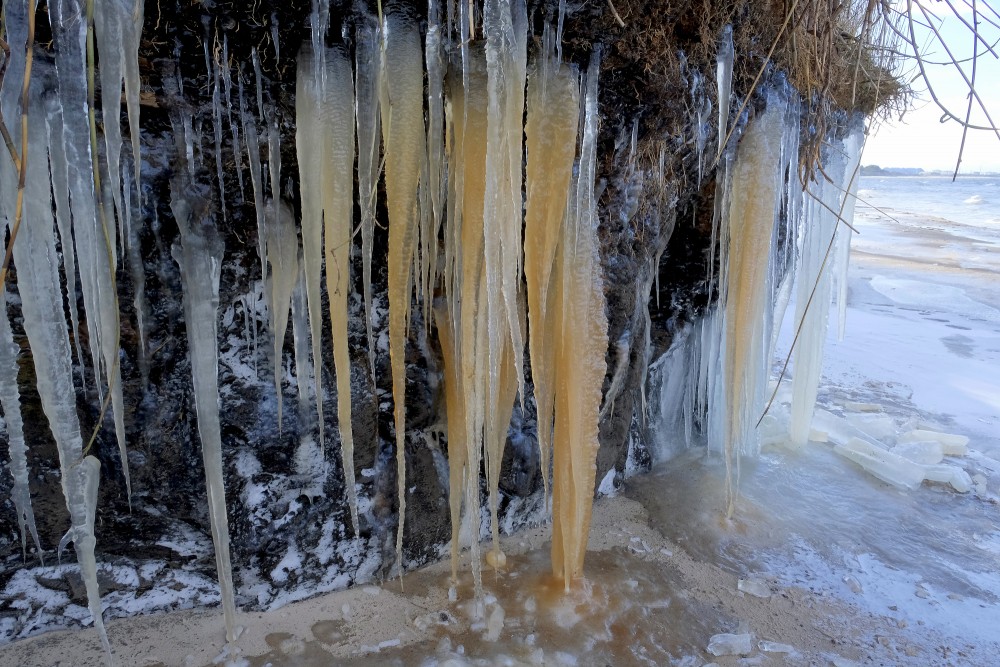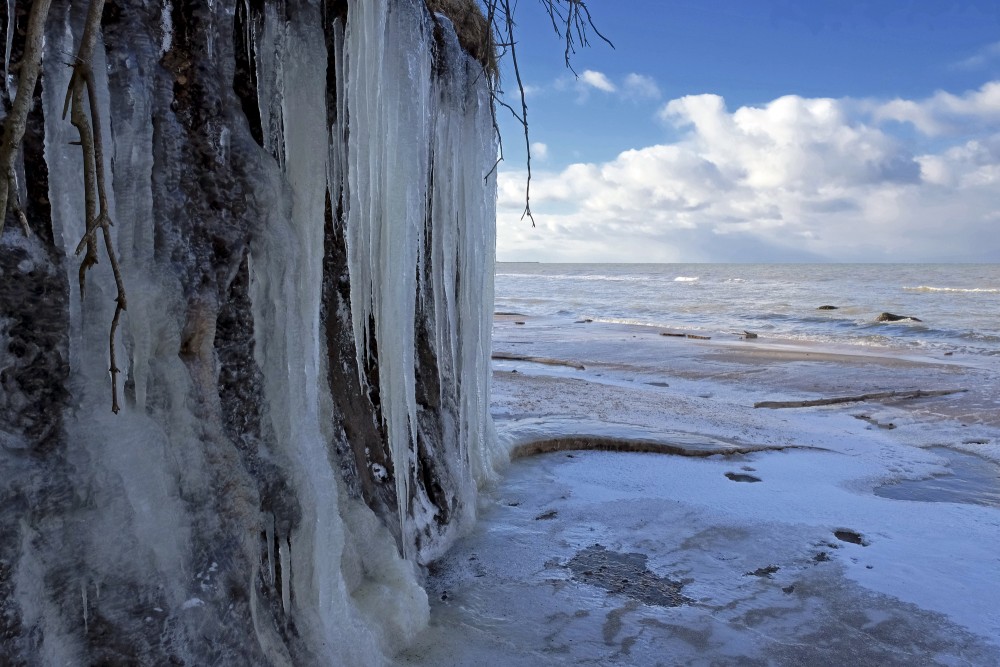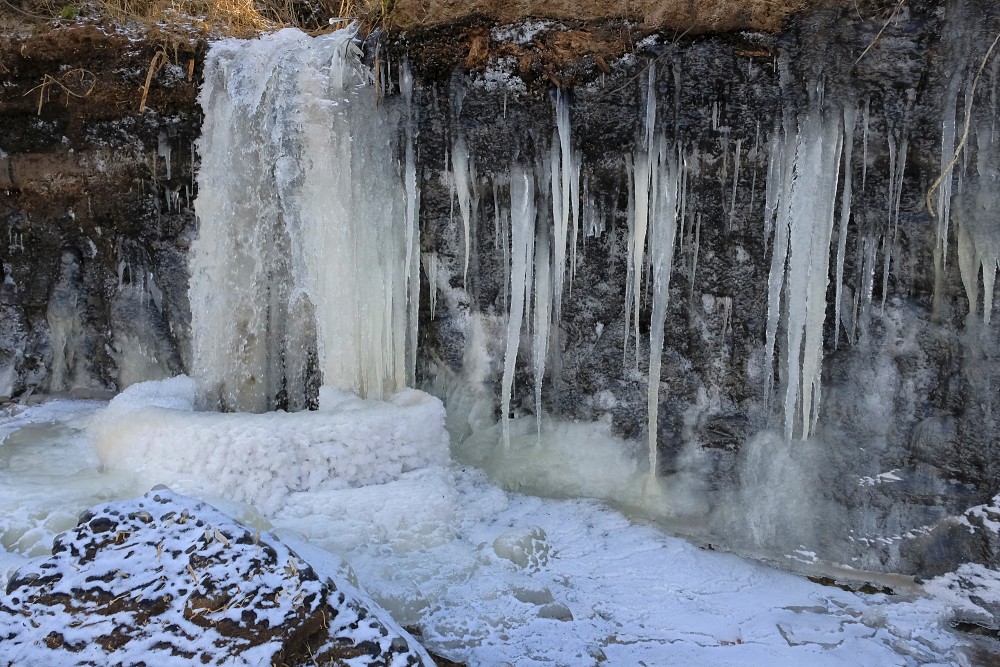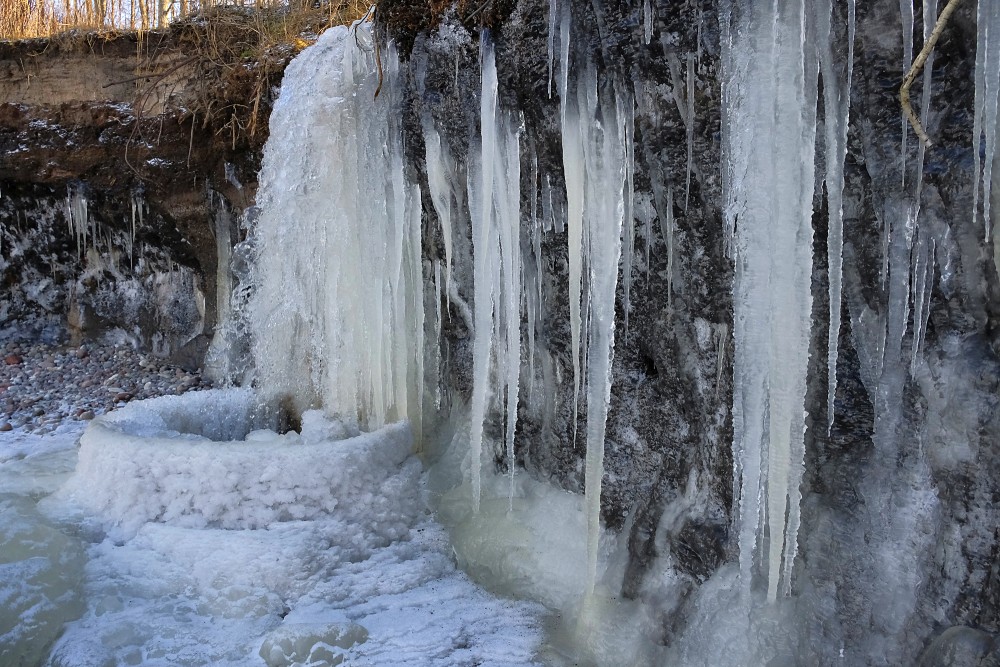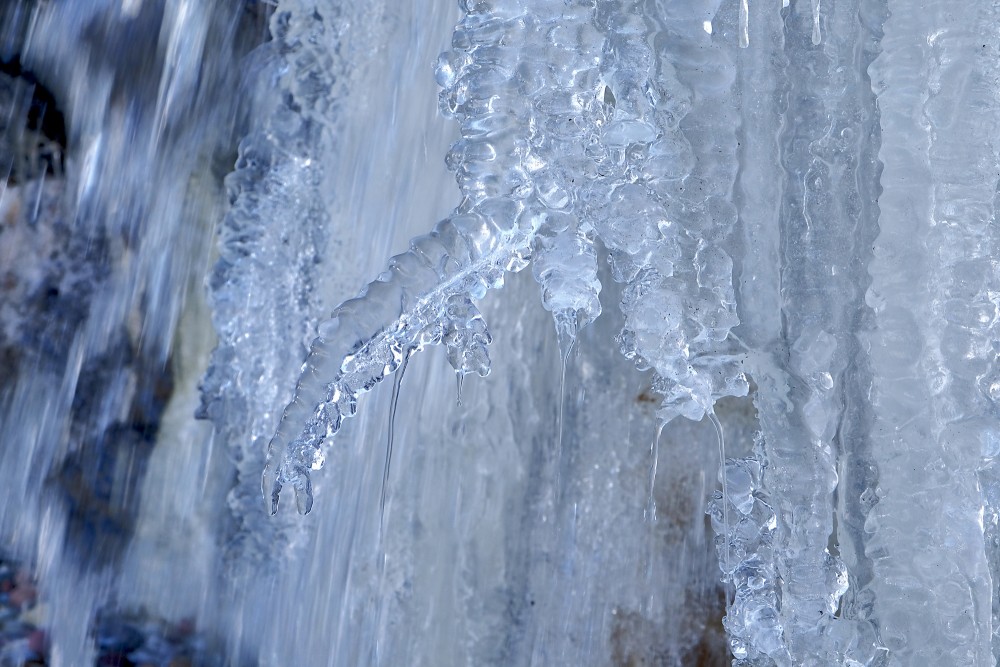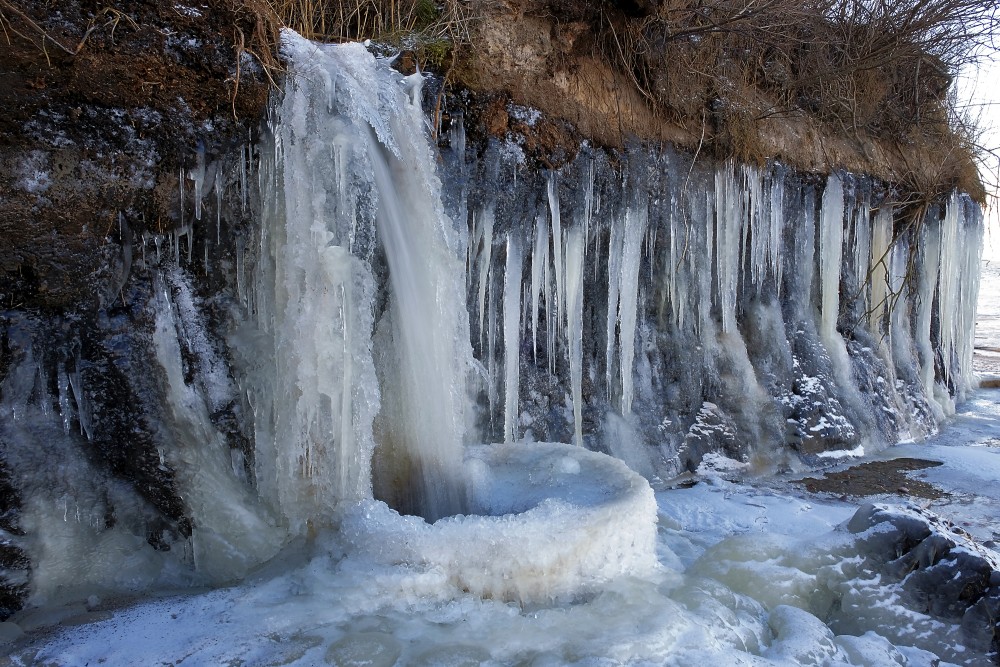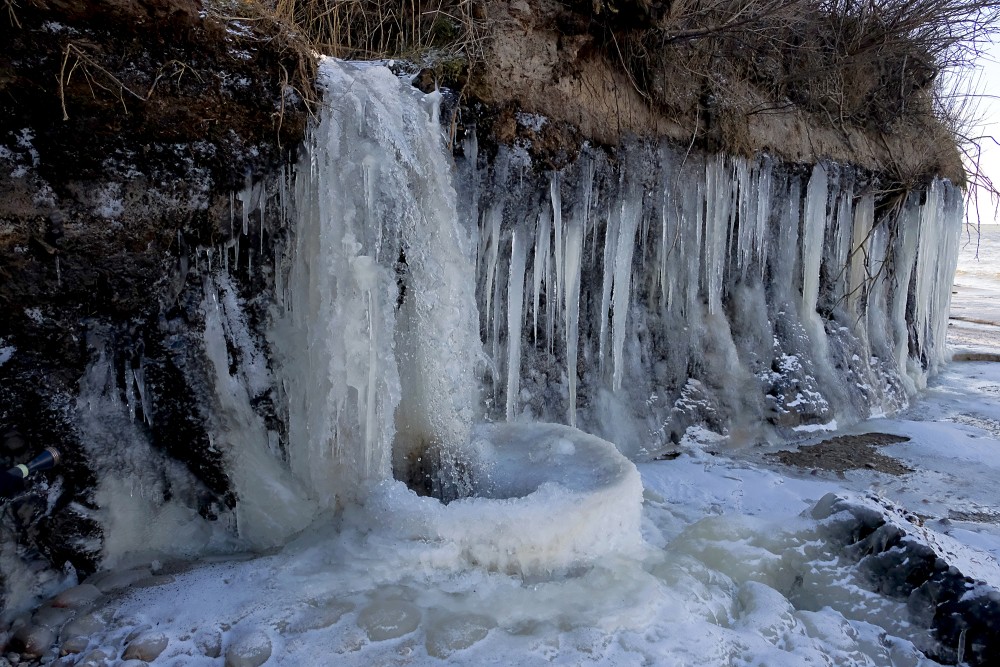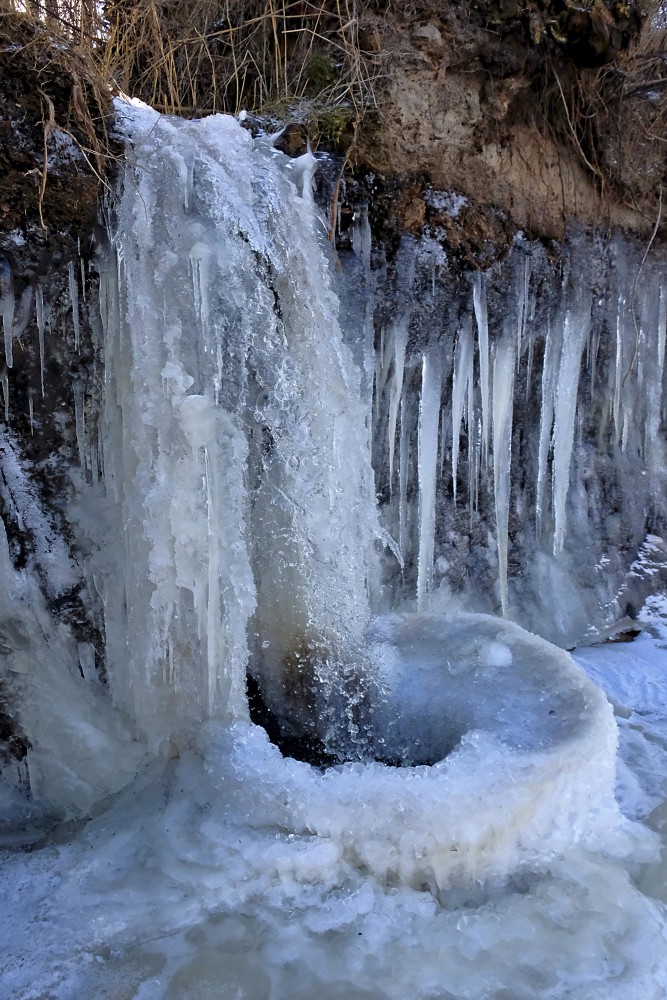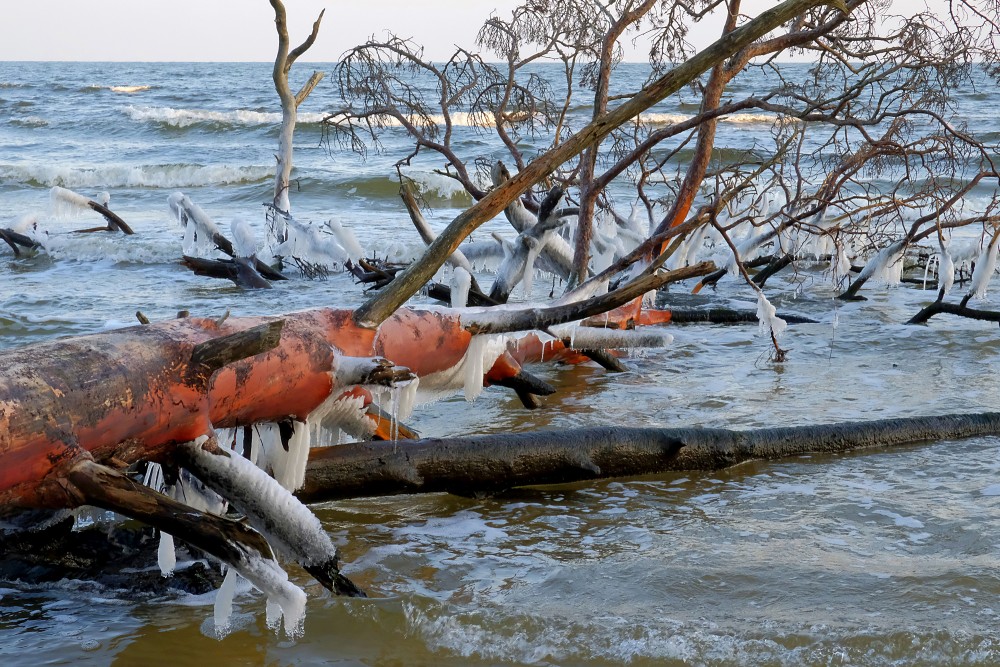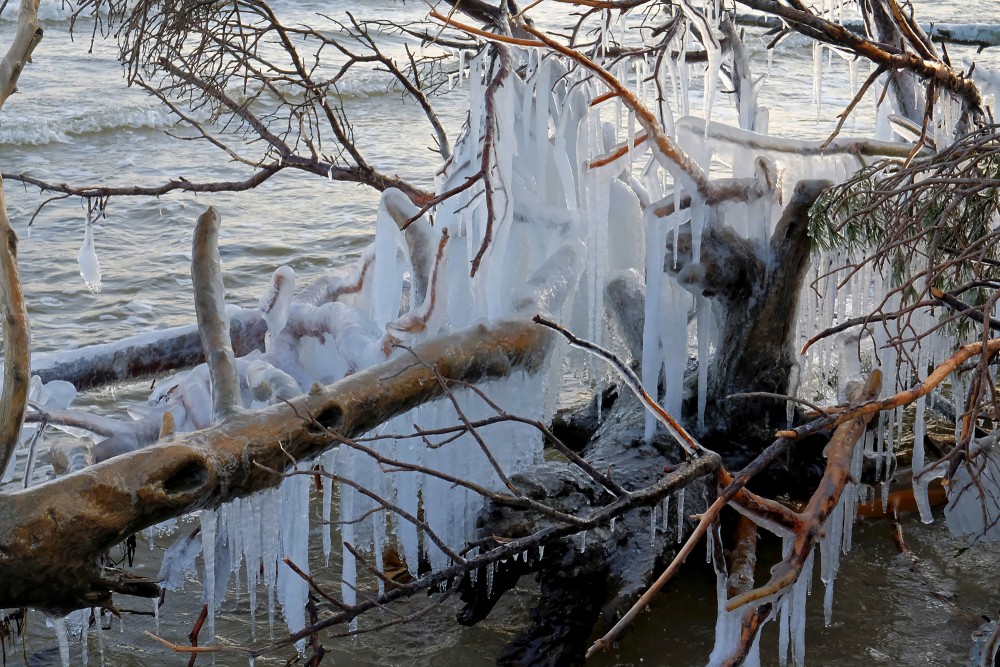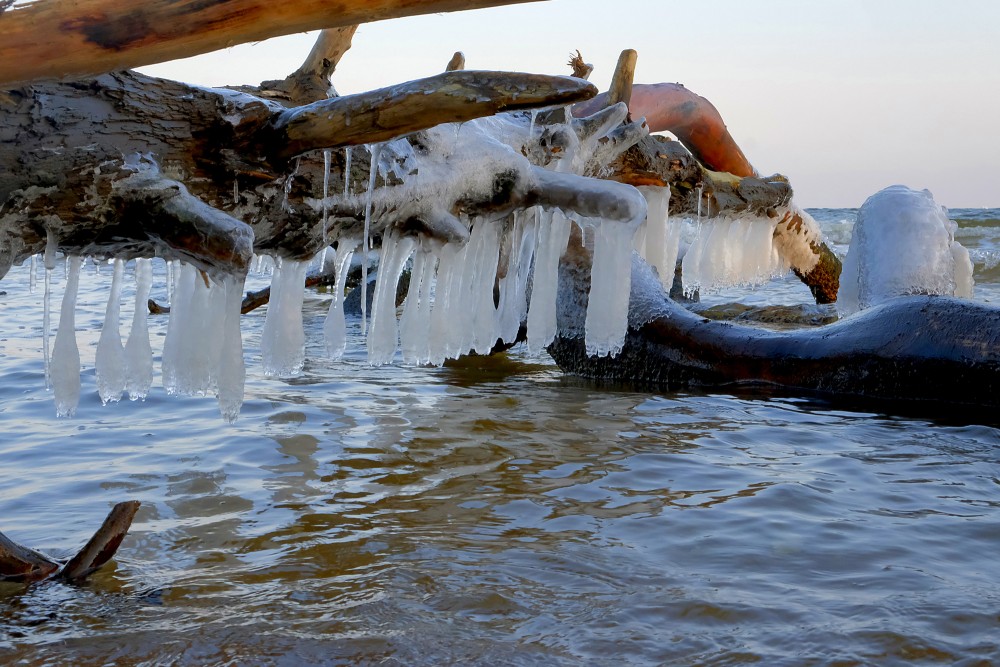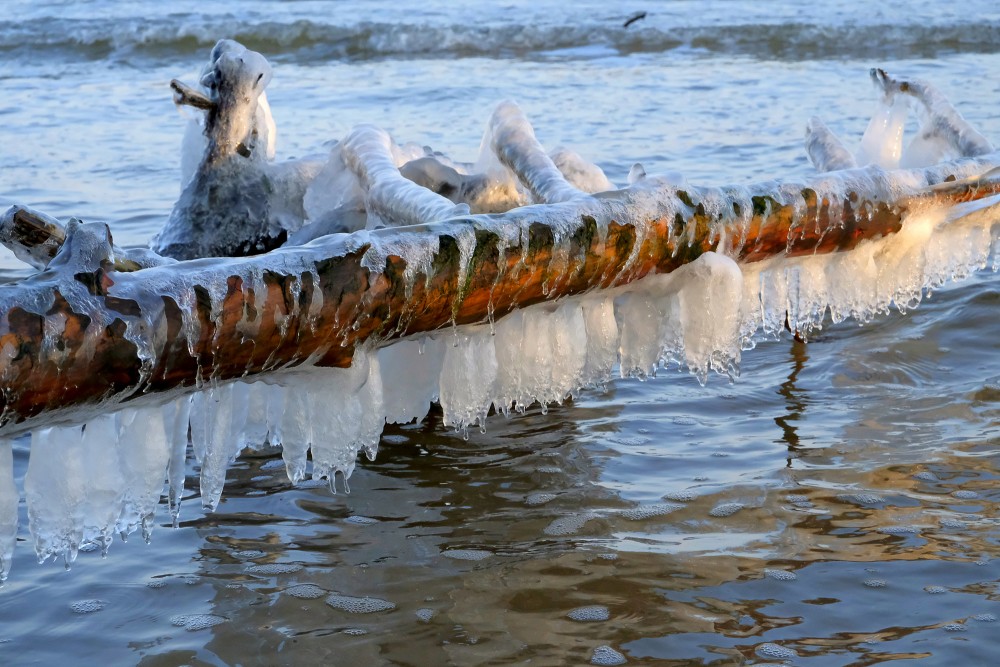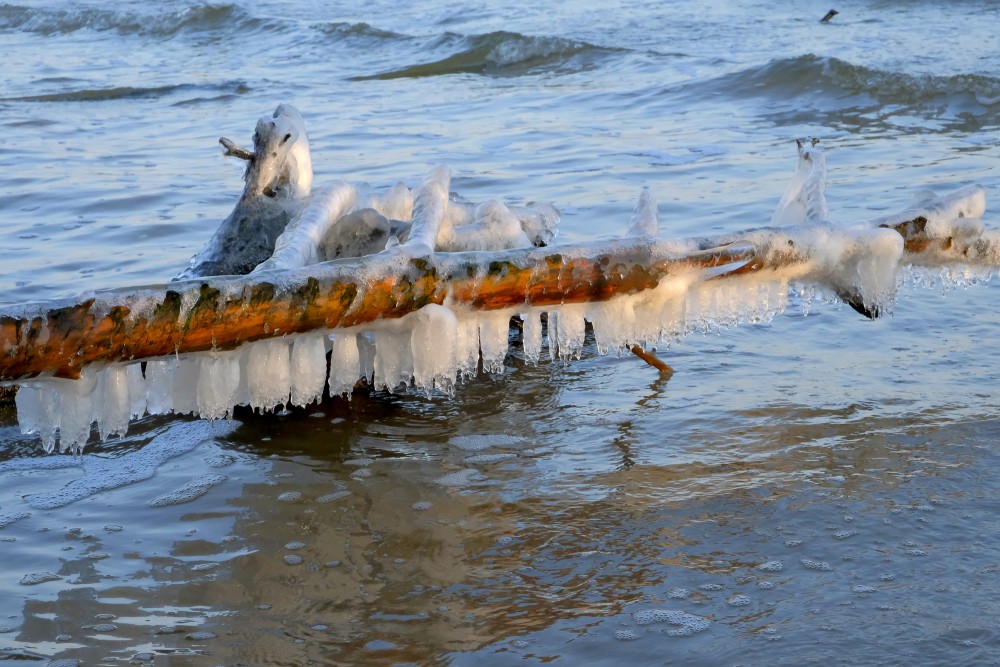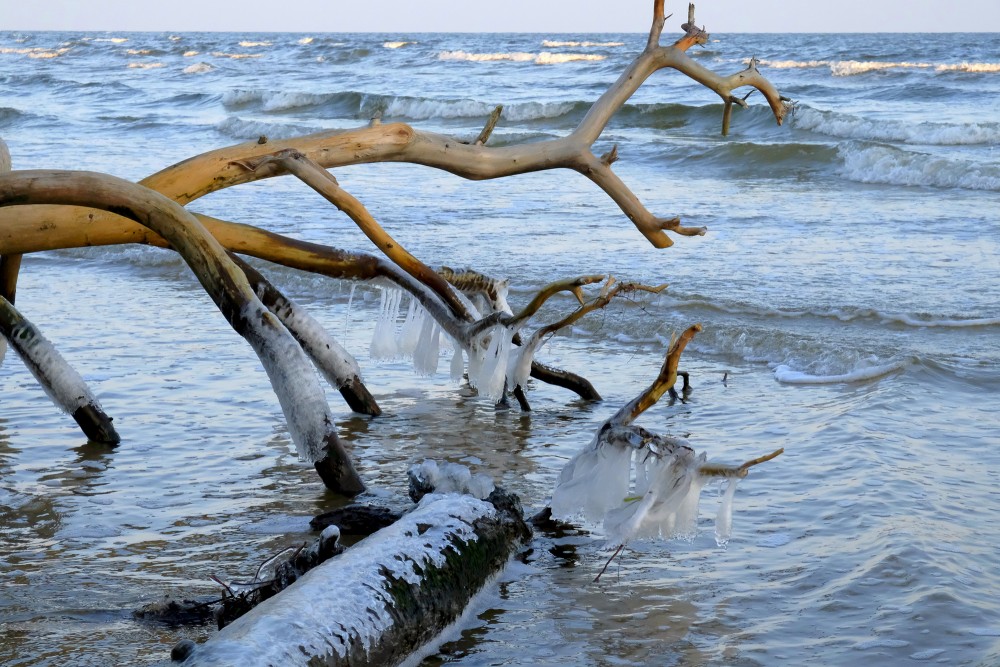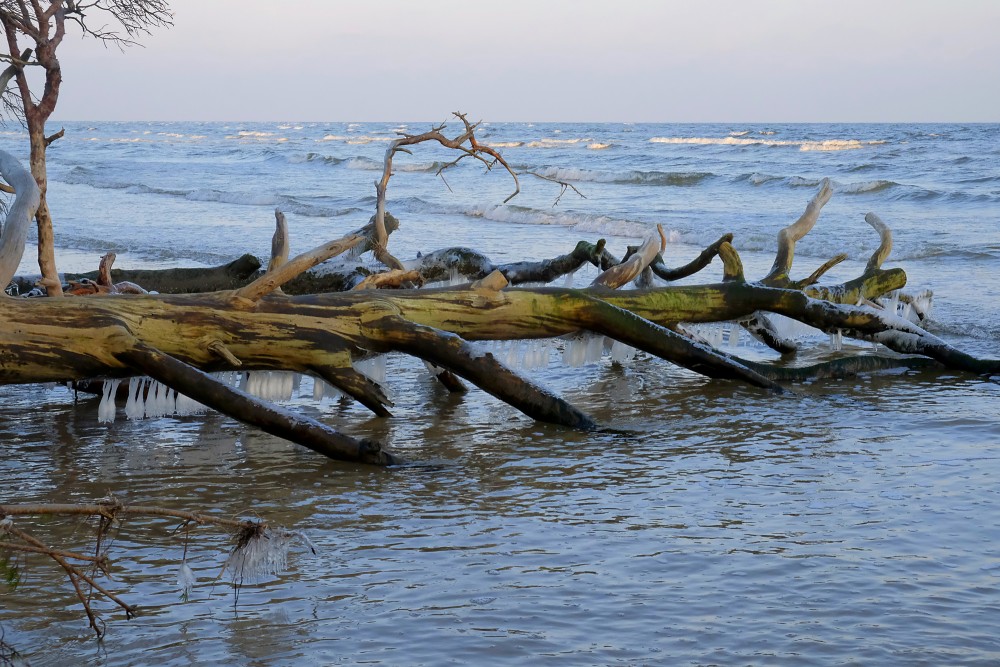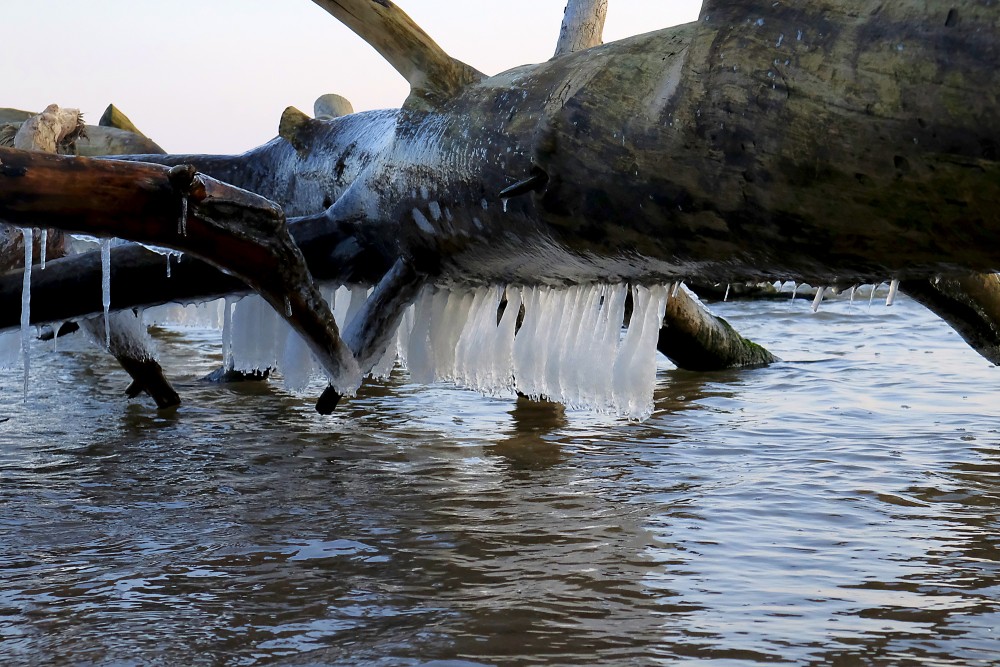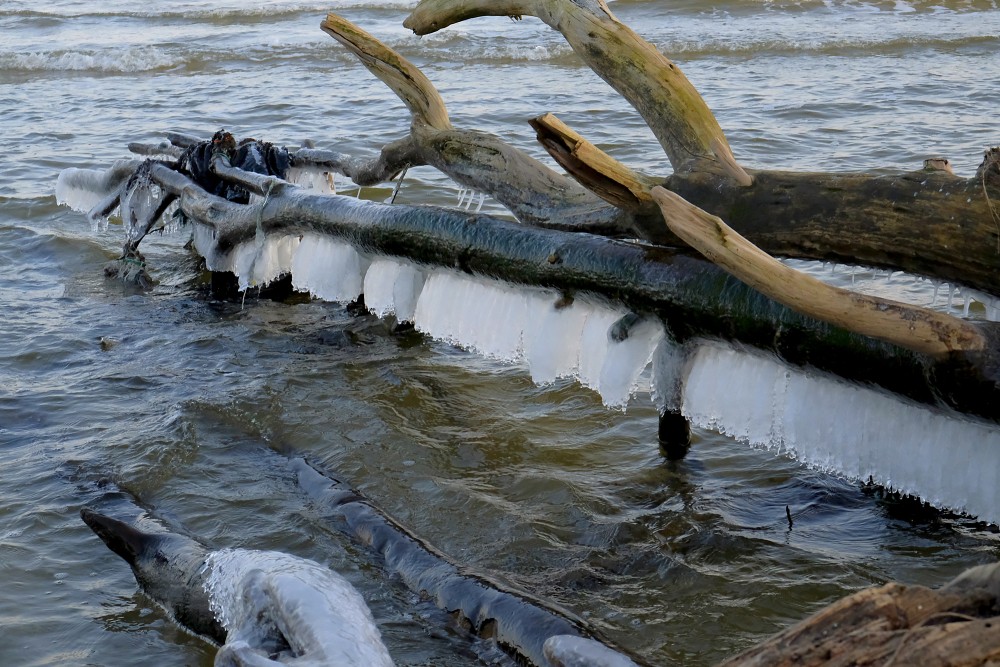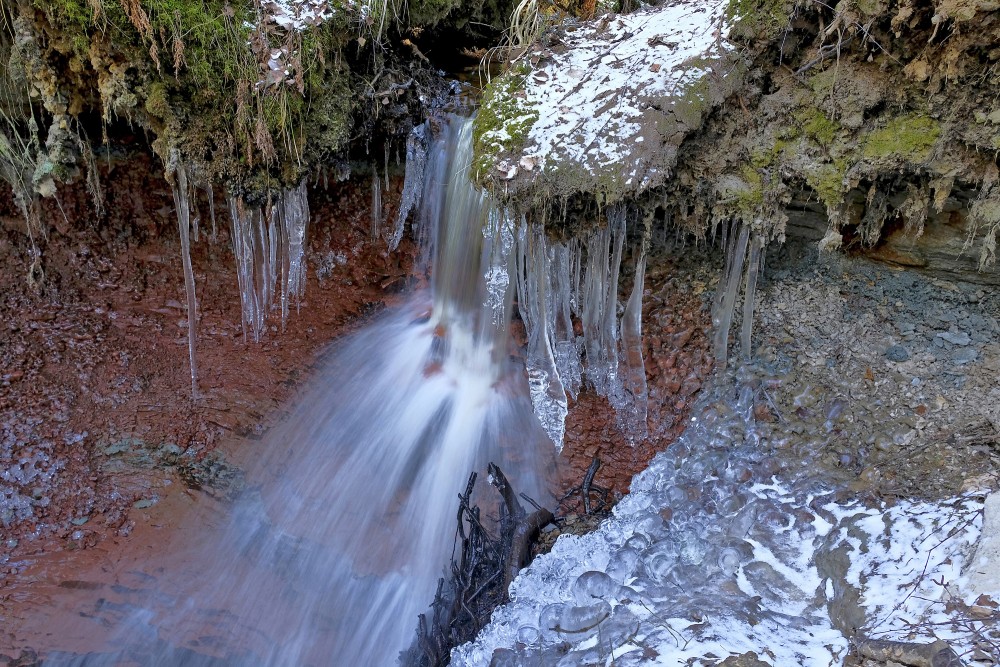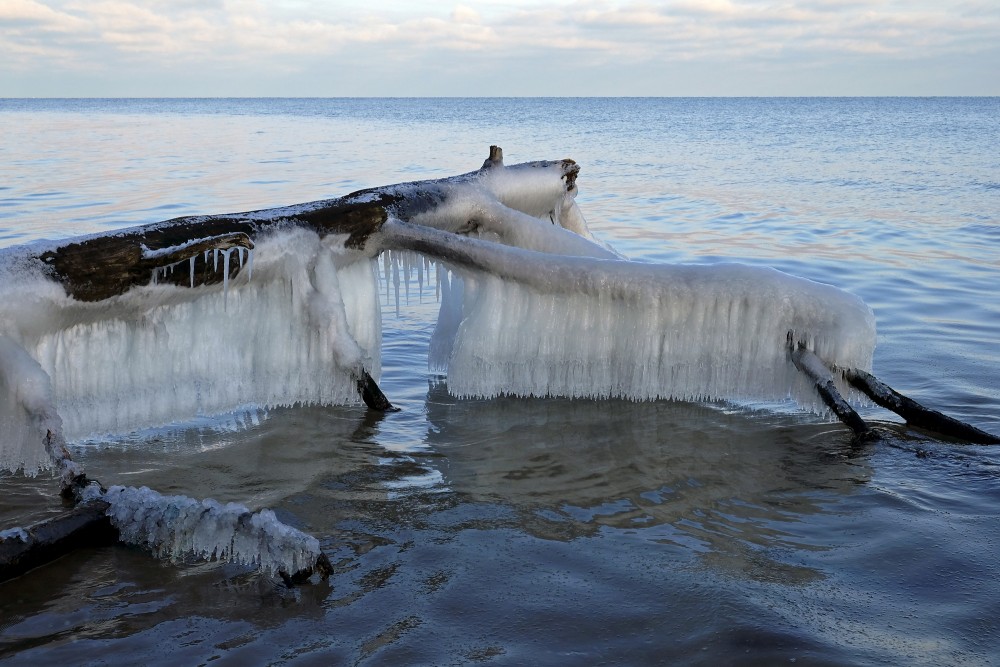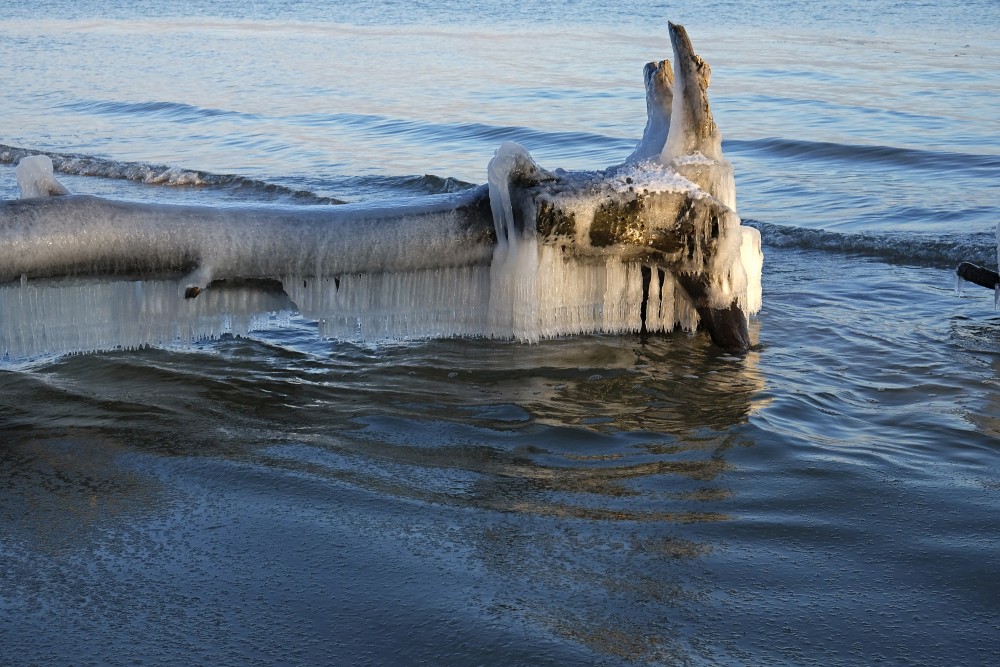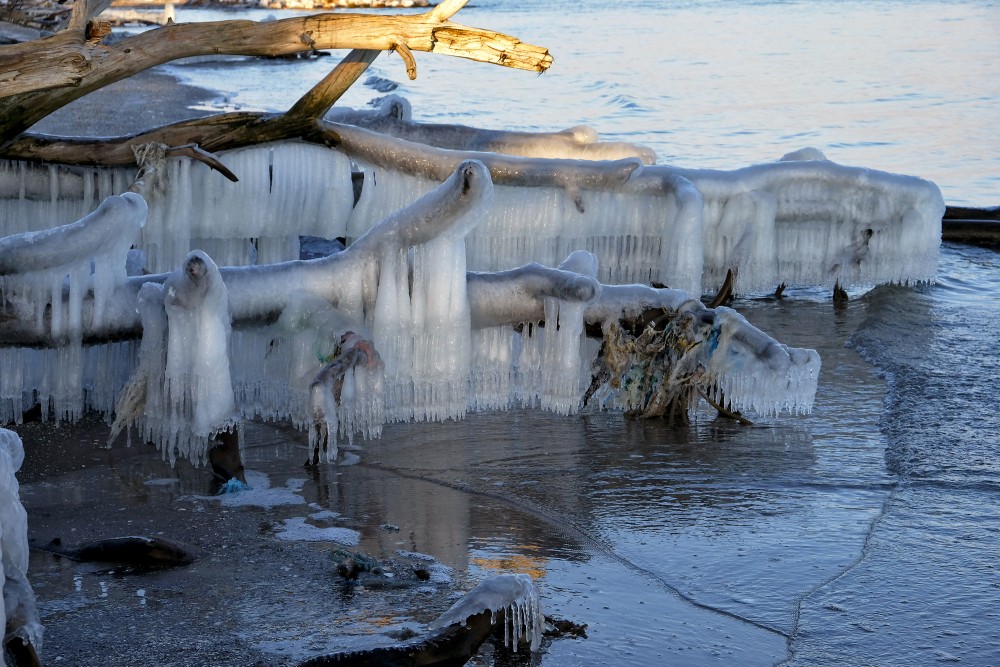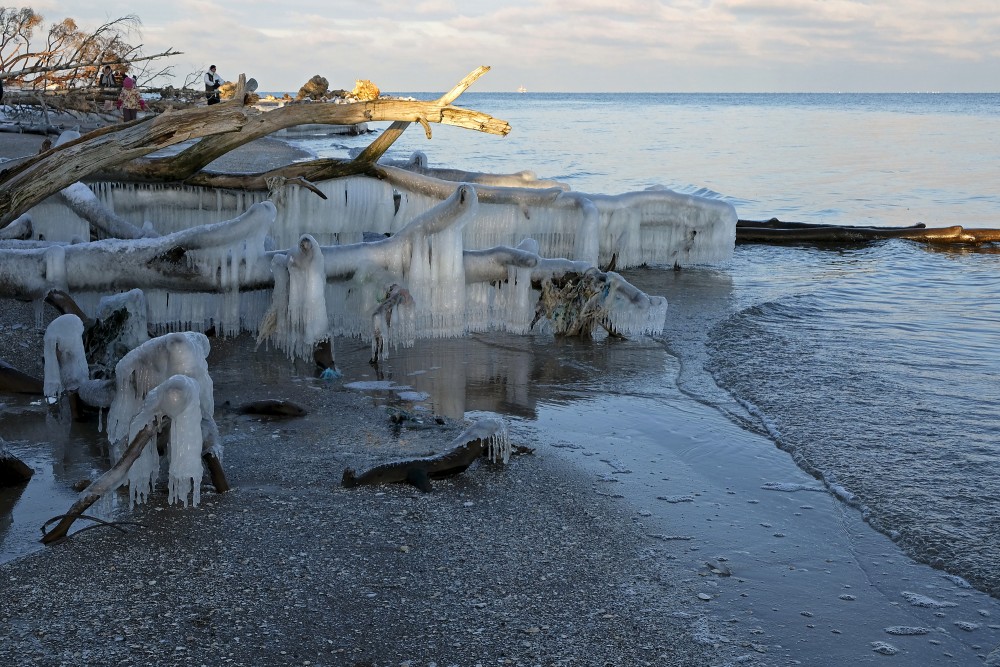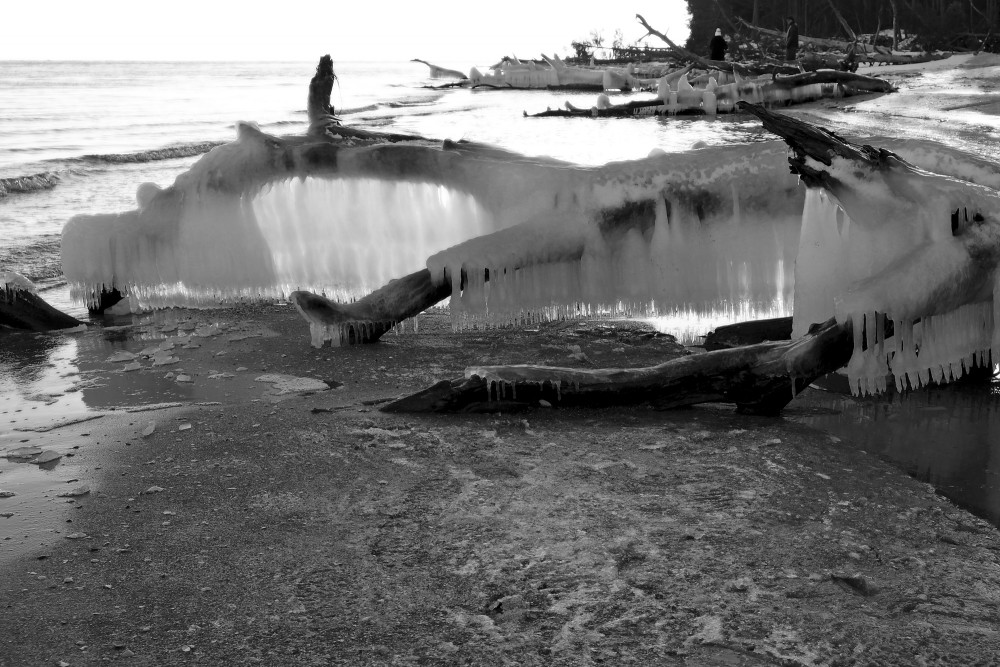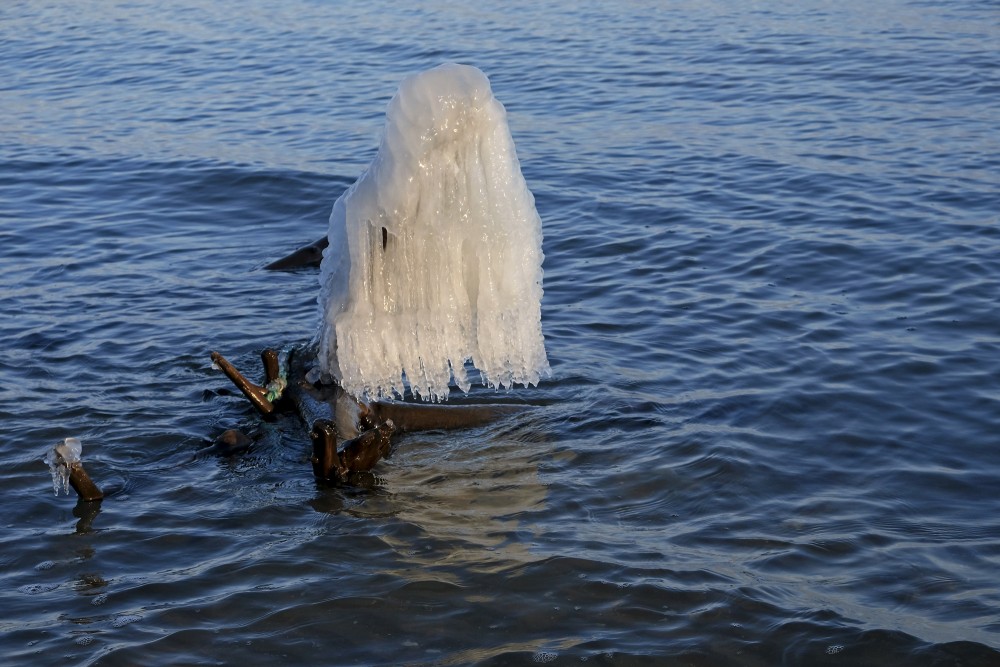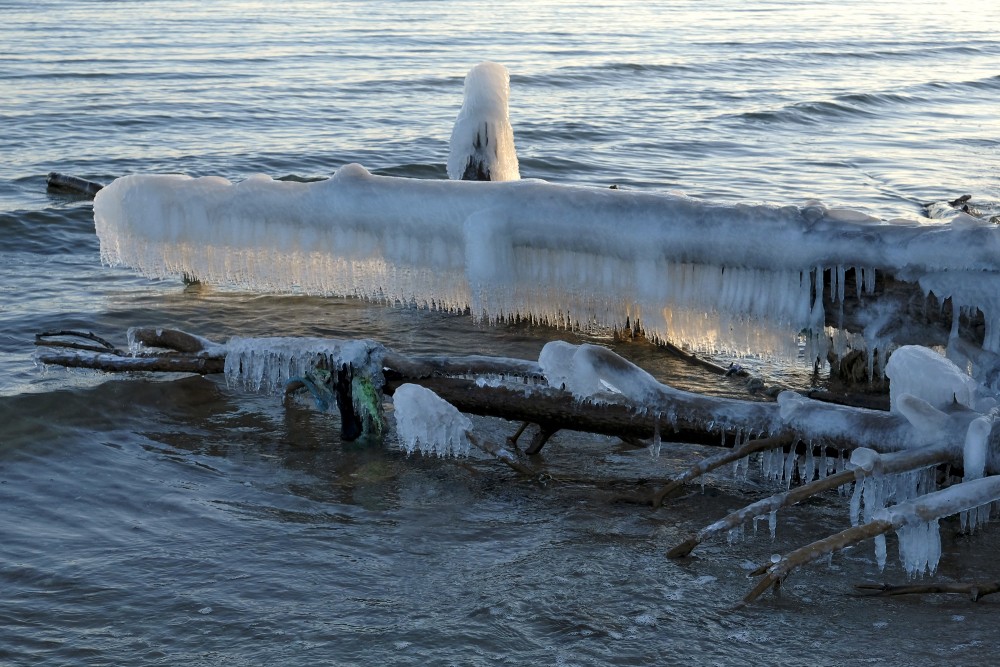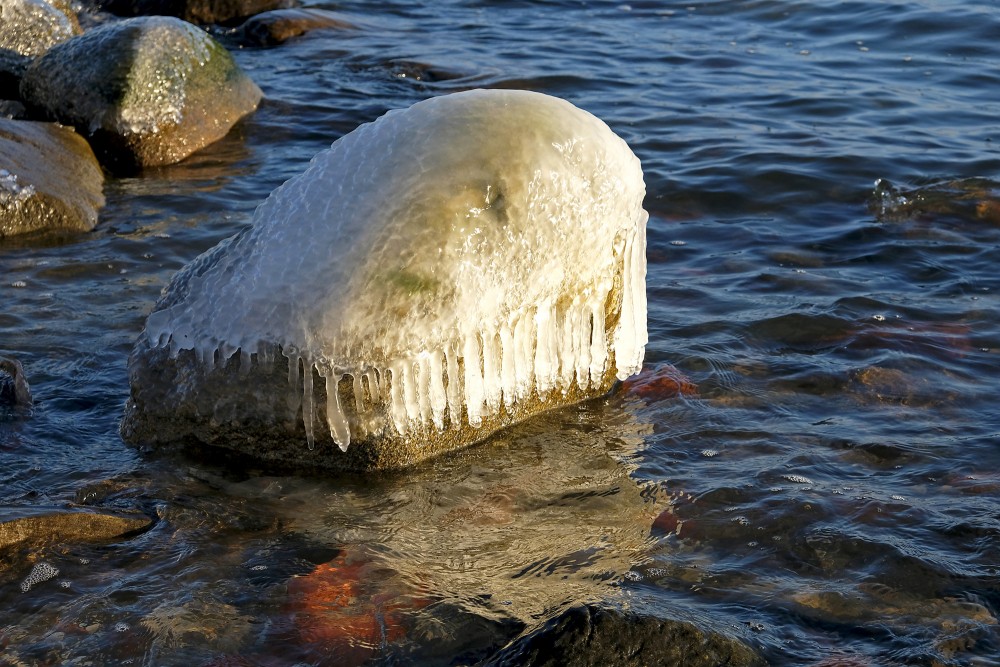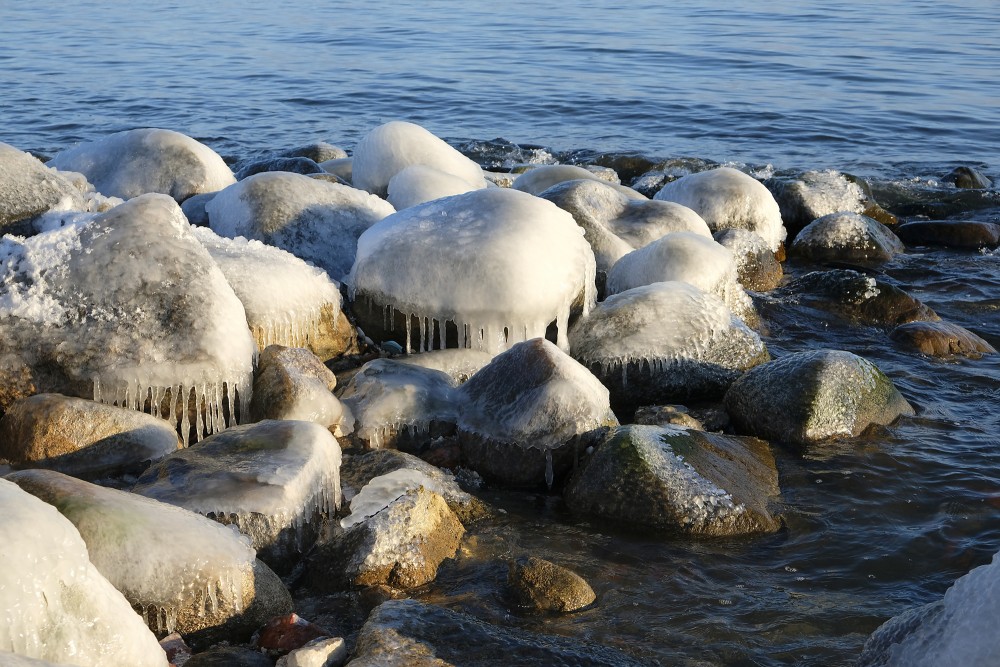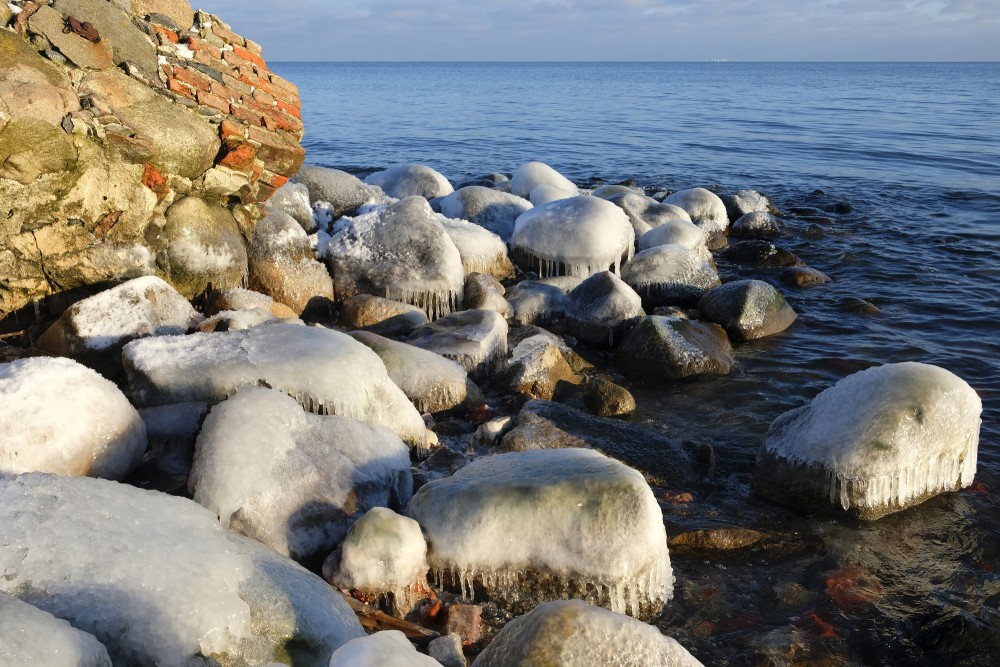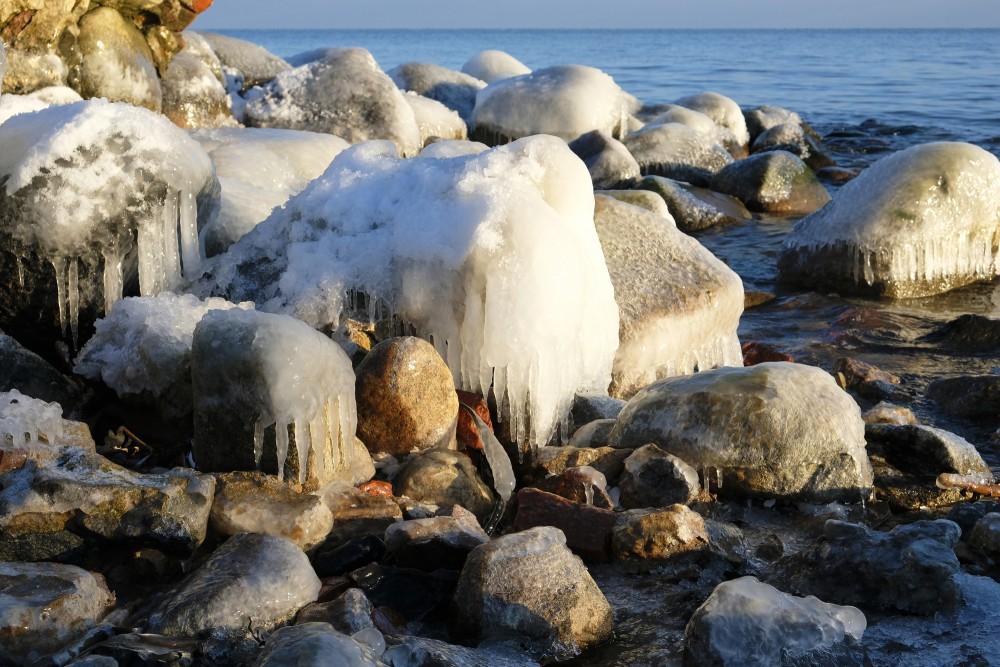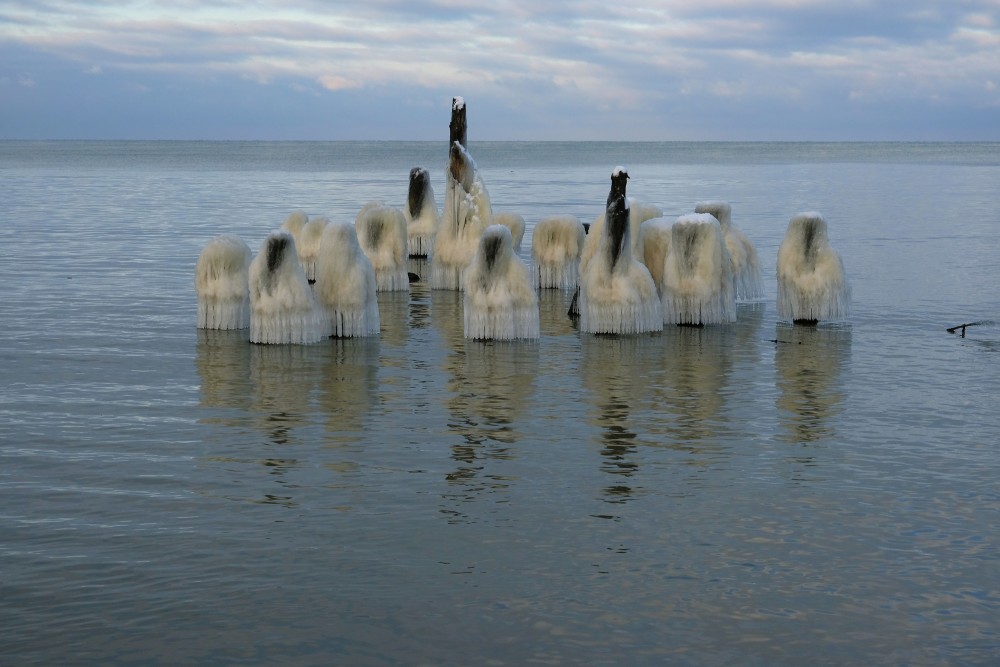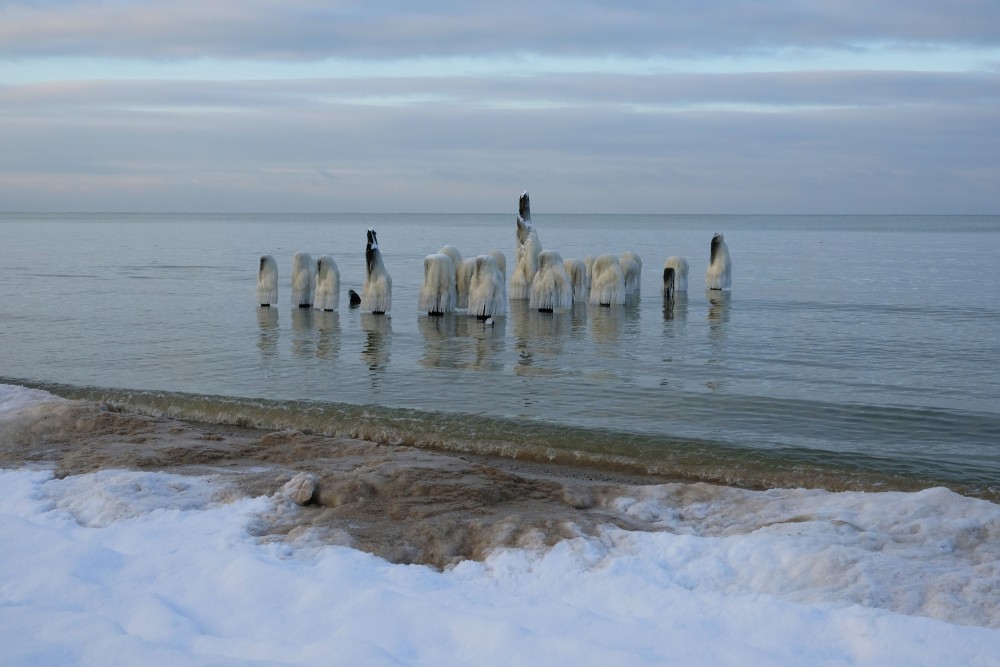Icicle
An icicle is a spike of ice formed when water dripping or falling from an object freezes.
Formation and dynamics
Icicles can form during bright, sunny, but subfreezing weather, when ice or snow melted by sunlight or some other heat source (such as a poorly insulated building), refreezes as it drips off under exposed conditions. Over time continued water runoff will cause the icicle to grow. Another set of conditions is during ice storms, when rain falling in air slightly below freezing slowly accumulates as numerous small icicles hanging from twigs, leaves, wires, etc. Thirdly, icicles can form wherever water seeps out of or drips off vertical surfaces such as road cuts or cliffs. Under some conditions these can slowly form the "frozen waterfalls" favored by ice climbers
Icicles form on surfaces which might have a smooth and straight, or irregular shape, which in turn influences the shape of an icicle. Another influence is melting water, which might flow toward the icicle in a straight line or which might flow from several directions. Impurities in the water can lead to ripples on the surface of the icicles.
Icicles elongate by the growth of ice as a tube into the pendant drop. The wall of this ice tube is about 0.1 mm (0.0039 in) and the width 5 mm (0.20 in). As a result of this growth process, the interior of a growing icicle is liquid water. The growth of an icicle both in length and in width can be calculated and is a complicated function of air temperature, wind speed, and the water flux into the icicle. The growth rate in length typically varies with time, and can in ideal conditions be more than 1 cm (0.39 in) per minute.
Given the right conditions, icicles may also form in caves (in which case they are also known as ice stalactites). They can also form within salty water (brine) sinking from sea ice. These so-called brinicles can actually kill sea urchins and starfish, which was observed by BBC film crews near Mount Erebus, Antarctica.
en.wikipedia.org
